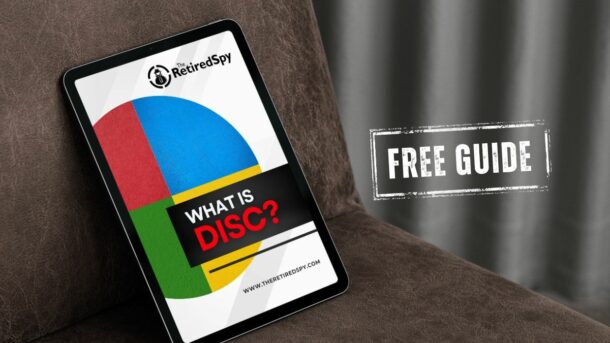In recent months, we’ve dived into the vital roles both employees and managers play in organizational growth and individual team member development. As explored in part 1 and part 2 of our blog segments, numerous factors contribute to maintaining a strong professional relationship between employees and the organization.
In this installment, we turn our focus to a fundamental element driving workplace connections: trust and transparency.
Trust is the act of believing in someone’s reliability, honesty, and integrity. It acts as a sturdy foundation, and without it, relationships can crumble. In all aspects of life, trust forms the bedrock of our connections with others. Whether with family, friends, or colleagues, trust allows us to rely on others, share our thoughts and feelings openly, and feel safe and supported.
In the workplace, trust fosters collaboration, boosts morale, and enhances productivity. When employees trust each other and their leaders, they communicate openly, share ideas, and work towards common goals. Trust makes the workplace a safe environment where people feel valued and respected, which, in the long run, creates a more positive and successful work culture.
Unfortunately, not all companies grasp the significance of trust or prioritize its cultivation. While many profess its importance, not all are willing to invest the necessary effort to sustain it. Let’s dive deeper into why this occurs and explore strategies for collective improvement within your team.
The Mutual Relationship of Trust and Transparency
As mentioned earlier, trust is the solid ground upon which the foundation of every connection and relationship stands. When we trust a person, team, or organization, we feel secure and confident in our interactions with them.
In fact, according to Deloitte’s 2024 Global Human Capital Trends research, companies deemed “trustworthy” often outperform competitors by up to four times in market value. Moreover, employees in trust-valuing organizations are 50% less likely to seek other opportunities, 180% more motivated, and 140% more willing to shoulder additional responsibilities. They tend to be more productive, satisfied, and even healthier mentally and emotionally.
But, like constructing anything that relies on a foundation, it also requires reinforcing factors. And, in the case of trust, transparency reinforces it. Deloitte’s survey even revealed that 86% of leaders agree: “The more transparent an organization is, the greater the workforce trust.”
Transparency creates a sense of reliability and integrity, strengthening the trust bond between team members, managers, and other members of the organization. It acts as the pathway to trust, ultimately building stronger and more meaningful relationships.
The Problem With “Too Much” Transparency

However, it’s not always straightforward, as excessive transparency can sometimes backfire and erode trust. Naturally, transparency might seem enticing for leaders because it offers a chance to put a spotlight on aspects of the organization and its team.
Yet, organizations must proceed cautiously, as transparency can be a double-edged sword—a potential goldmine or a minefield of challenges. The manner in which transparency is implemented distinguishes its true impact. Here are three common approaches in which transparency is used:
Proactive Transparency: Leaders or workers deliberately share information to bolster trust, accountability, and decision-making or to achieve mutually beneficial outcomes.
Reactive Transparency: This arises from legislative or regulatory changes that compel leaders to disclose previously guarded information.
Forced Transparency: Information about workers or executives is collected and scrutinized as a blanket organizational policy, often without their knowledge or consent.
Like trust, transparency ideally operates as a two-way street. While it’s good that there’s a trend toward proactive transparency, some organizations still practice reactive and forced transparency without regard for their team. Unfortunately, these latter forms of transparency undermine trust among team members, as they stem from a misuse of openness within the organization.
How Technology Affects Transparency in the Workplace
One of the biggest factors influencing how transparency is enforced in organizations is the rise of new technologies, such as AI and surveillance tools.

With technology, many companies claim to achieve “greater transparency” by closely monitoring employees’ activities. This includes gathering data from computers, social media, emails, calendars, and smartphones. According to research commissioned by ExpressVPN, 78% of employers also admit to using remote tools for employee monitoring.
However, this heightened surveillance has left many employees feeling uneasy as it encroaches on their privacy. Consequently, turnover rates are nearly twice as high in organizations utilizing monitoring software compared to those that do not.
It’s evident that this level of scrutiny falls under micromanagement, undermining trust within the organization. Ironically, if leadership fails to recognize this as an issue, it indicates a glaring absence of trust. And if trust doesn’t flow from the top down, how can it be expected to thrive among lower ranks?
Only 37% of workers surveyed also express high confidence in their organization’s responsible use of work and workforce data, supporting this notion.
Conversely, when employees perceive personal benefits from sharing their data transparently, they’re more willing to embrace it. Gartner found this in their study after 96% of digital workers agreed to increased data monitoring in exchange for benefits like training and career development opportunities.
It’s clear that trust and transparency can only thrive when both parties engage in a reciprocal relationship. When practiced as a two-way street, they mutually benefit the organization and its employees.
Signs Your Organization Should Revisit Its Transparency Policies
Nonetheless, if you’re not sure whether or not your organization needs to revisit its transparency policies, here are a few telltale signs that can help you check:
Increased Rumors and Speculation

If employees are relying on gossip or speculation to fill in gaps left by a lack of transparent communication, it’s a clear sign that transparency policies need reviewing. Rumours can erode trust and create a culture of uncertainty and distrust.
Low Morale and Engagement
When employees feel left in the dark or uninformed about important decisions or changes within the organization, morale and engagement can decrease. A lack of transparency can make employees feel undervalued and disconnected from the company’s goals and vision.
High Turnover Rates
If your organization is experiencing higher-than-average turnover rates, it may indicate a lack of trust among employees. When employees don’t feel valued or informed, they are more likely to seek opportunities elsewhere. Frequent turnover can be costly for the organization and disrupt productivity and team cohesion.
Resistance to Change or Initiatives
A lack of transparency can breed skepticism and resistance among employees when it comes to new initiatives or changes within the organization. Without clear communication and understanding of the reasons behind these changes, employees may be hesitant to embrace them, leading to delays or outright resistance.
Employee Burnout and Stress
Information overload or unclear communication can contribute to employee burnout and stress. When employees feel overwhelmed by the volume of information or unsure about their roles and expectations, it can lead to decreased productivity, increased absenteeism, and a decline in overall well-being.
This Is Where DISC Comes In

In every workplace, trust and transparency are like secret agents—essential for smooth operations. Surprisingly, despite their importance, only 13% of Deloitte’s surveyed organizations recognize their significance. If your organization falls into this category and you resonate with the signs mentioned earlier, there’s a solution: DISC.
DISC acts like a spy, revealing how employees of different personality types perceive trust. It’s the perfect tool to gauge who feels most trusted and who might need a little extra reassurance. Here’s how to understand each DISC personality trait:
Direct (D)
Direct individuals feel most trusted when they have autonomy and clear goals. They appreciate straightforward communication and opportunities to take charge. On the other hand, they may feel less trusted when information is withheld or when they perceive ambiguity in decision-making processes.
Suggestions:
- Provide clear objectives and expectations to give Direct individuals a sense of control and accountability.
- Foster an environment of open communication where Direct individuals feel empowered to voice their opinions and concerns.
- Ensure transparency in decision-making processes, explaining the rationale behind organizational changes or directives.
Inspiring (I)
Inspiring individuals thrive on positive reinforcement and recognition. They feel most trusted when their contributions are acknowledged and valued. But they feel less trusted when they perceive favouritism or when information is selectively shared.
Suggestions:
- Recognize and celebrate the achievements of Inspiring individuals to reinforce trust and motivation.
- Implement policies that promote inclusivity and equal opportunities, minimizing the risk of perceived favouritism.
- Encourage transparent communication channels where information is shared openly and consistently.
Supportive (S)
Supportive individuals value stability and reliability. They feel most trusted when they have a sense of security and when their loyalty is reciprocated. On the flip side, when changes are implemented without sufficient explanation or when they perceive inconsistencies in leadership, their trust in the organization also begins to change.
Suggestions:
- Provide regular updates and explanations regarding organizational changes to alleviate concerns and maintain trust.
- Cultivate a culture of transparency where Supportive individuals feel comfortable expressing their opinions and feedback.
- Establish clear channels for addressing concerns and providing support, fostering a sense of trust and reliability.
Cautious (C)
Cautious individuals appreciate accuracy and attention to detail. They feel most trusted when information is reliable, and decisions are based on thorough analysis. And yet, when they perceive inconsistencies in information or when they are not involved in decision-making processes, they lose trust in the system.
Suggestions:
- Ensure that the information provided is accurate and supported by data to build trust with Cautious individuals.
- Involve Cautious individuals in decision-making processes, leveraging their analytical skills and attention to detail.
- Establish clear guidelines and protocols for sharing information, minimizing the risk of misunderstandings or inconsistencies.
Final Takeaway
Trust helps hold your organization together and move it closer to success. Just like in any relationship, trust is built on open communication. When there’s trust, people feel safe being vulnerable to share their thoughts and feelings openly. But trust isn’t handed out freely — it’s earned over time.
For trust to flourish, transparency is key. When organizations are transparent, they show they have nothing to hide, which builds trust. It’s a mutual exchange—employees need to trust the organization, and the organization needs to trust its employees.
Many organizations haven’t caught on to this yet, as surveys and studies reveal that most haven’t taken concrete steps to foster trust and transparency. But it’s never too late to turn things around, especially if you incorporate DISC into your strategies.
Keep an eye out for our next articles as we dive deeper into other areas organizations often overlook but need to address for their teams to thrive.


